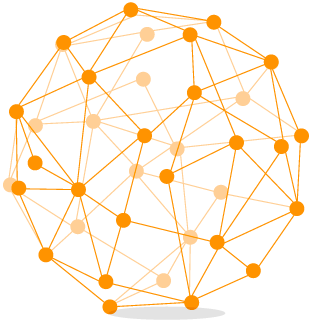Obsessive compulsive disorder (OCD) affects millions of people today. The treatment, to be effective, requires first defining the type of OCD from which the patient suffers. This article details treatments adapted to OCD with rituals, triggering factors, symptoms and treatments using the systemic approach.
An interactional reading involves a more personalized understanding of obsessive-compulsive disorder recognizing that individuals may experience and manifest their symptoms in unique ways. This approach promotes personalization of treatment, with a more in-depth exploration of underlying dynamics which helps to improve therapeutic engagement. While the DSM provides a structured framework for classifying disorders, interactional reading enriches clinical understanding by highlighting the diversity of OCD experiences and informing therapeutic approaches tailored to each individual.
Determining the nature of OCD
The treatment will be oriented according to the nature of the OCD observed: OCD with rituals, OCD without rituals or pathological doubt, pathological doubt.
OCD treatment with rituals
The DSM-5 specifically defines obsessive-compulsive disorder (OCD) by including items such as pure obsessions and pathological doubts. However, a strategic, constructivist approach distinguishes these elements as separate and unique from classic OCD, emphasizing their distinct systems of perception and reaction.
From the strategic-constructivist perspective, OCD is interpreted as an excess of control, a defensive response to a phobic perception. Individuals with obsessive tendencies try to manage and control these fears through anticipatory actions, planning and taking preventative measures. Compulsions, in this context, are seen as attempts to relieve anxiety or fear.
Although fear is often the predominant emotion in OCD, other emotions may also be present, such as pain (in those who practice self-harm), anger (in those with defiant or abusive behaviors). opposition), or pleasure (in some cases of addiction). Depending on the diagnosis, interventions are oriented primarily around fear management, with individuals attempting to neutralize their fears through rituals of different types, avoidance behaviors, and the search for reassurance.
These rituals are often at the heart of managing OCD. Depending on their temporal orientation, they can serve as preventative or propitiatory measures, or attempts at reparation for past events. They can be rational or magical in nature and involve the person themselves or others around them. Although these actions may seem meaningless to an outside observer, they are based on a specific internal logic. Recognizing and understanding this logic is a decisive step for the effectiveness of OCD treatment, as it guides the choice of appropriate therapeutic interventions.

Book an in-office consultation in Paris Montorgueuil or remotely by videoconference
We receive our patients from Monday to Friday.
To make an appointment you can call us on +33 (0) 1 48 07 40 40
or +33 (0) 6 03 24 81 65 or even make it directly online
by clicking here:
Compulsions come in two main forms: those that are driven by fear, such as washing one's hands to avoid contamination , and those that arise from pleasure, such as shopping compulsively, suffering from bulimia or binge eating. indulge in games or screens . Compulsions linked to pleasure are particularly reinforced by the brain structure, which finds gratification in repetition. However, it is essential to note that not all rituals are alike in terms of structure, purpose or what we might call their "internal logic". While some require being performed a specific number of times, others must follow a specific sequence, or be performed to achieve a particular emotional state or sensation. Recognition of the logic underlying these compulsions is fundamental for the clinician, because without this understanding, it is difficult to determine the most suitable intervention to treat the disorder quickly and effectively given the type of ritual in place:
- Rational and preventive rituals are specific practices arising from the patient's belief that he or she can prevent a feared event through these actions. For example, it may concern the fear of being contaminated, of losing control or of seeing one's vital energy depleted.
- Reparation rituals are attempts to repair or protect against consequences that have already occurred or are perceived as such. They include washing hands to remove impurities, repeatedly checking a task lest it be done incorrectly, or reciting a person's name to protect oneself from their harmful influence. They aim to correct or intervene in past events, thereby creating an orientation towards the past.
- Propitiatory rituals, often perceived as magic, are undertaken in the hope of generating a favorable result or avoiding a negative event. They may include arranging objects in a certain way to attract good luck or repel misfortune, drawing on religious, superstitious beliefs or a reliance on supernatural powers.
Systemic reading of OCD with ritual
From a systems perspective, these rituals are symptoms of unsuccessful attempts to control fear or achieve a desired state. Typical unsuccessful solutions include avoiding anxiety-provoking stimuli, as well as constantly seeking support or assistance from loved ones, which can draw them into the pathological dynamics of the disorder.
The impact of loved ones on individuals with OCD is significant. Often involved in rituals or attempts at control, family members can find themselves caught up in the disorder. Patients may become increasingly anxious or aggressive towards their loved ones, especially if they refuse to participate in rituals. Constructive involvement of loved ones in treatment can increase its effectiveness, but it is also crucial that they learn to detach themselves from the pathological cycle to promote the patient's autonomy and responsibility.

How to Identify Obsessive Compulsive Disorder with Ritual
Strategic questions in the treatment of obsessive-compulsive disorder from a strategic-constructivist perspective are essential to understanding the nature, function, and impact of patient rituals. These questions make it possible to develop personalized and effective intervention strategies. Here are the key questions asked in this therapeutic framework:
Question the nature of rituals:
- Are the rituals performed thoughts or actions?
- Do you do them yourself or do they involve other people?
Questioning trust and control:
- (If the rituals involve other people) Are you getting help because you don't trust yourself or your ability to control those around you?
Question the objectives of rituals:
- Do they serve to repair what happened or to prevent what could happen?
- If they are preventive, are they rational or propitiatory?
Question the characteristics of rituals:
- Do they have to be repeated a certain number of times or can they vary?
- (If they are variable) Do they follow a sequence or a feeling?
These strategic questions will help reveal the structure and meaning of rituals, as well as their impact on the patient's life. By deeply understanding these aspects, the therapist can guide the patient towards modifying their rituals, leading to a significant reduction in the impact of OCD. The answer to these questions provides a basis for prescribing specific interventions that will be tailored to the needs and particularities of each patient, aimed at disrupting the cycle of compulsions and obsessions and restoring a sense of autonomy and control.
Other strategies may be used to delay or modify rituals, allowing the patient to manage anxious impulses and reduce the frequency of compulsions. Alongside this, metaphors and aphorisms will be employed to recontextualize the patient's experience, offering perspectives of resilience and recovery by relating OCD symptoms to broader, universal ideas.
Treatment of OCD with rituals: prescriptions
Different prescriptions can be implemented to restructure the patient's rigid perception and compulsive behaviors. These prescriptions revolve around several strategic axes:
- The Counter-Ritual : In the presence of a numerical sequence, this technique is administered to create a choice between repeating the ritual a set number of times or avoiding it altogether. The goal is to bring the patient to a saturation point, following the principle of "taking the enemy to the attic to take away his ladder." This overprescription aims to exhaust the need for the ritual until the patient regains control.
- Prescription of ritual variations : If the ritual involves prayers or other specific actions, the patient may be asked to modify them significantly, for example, by changing the position or type of prayer. The objective is to make the ritual gradually perceived as a constraint, leading the patient to naturally avoid it.
- Procrastination of rituals : Encouraging the patient to postpone rituals for increasingly longer time intervals helps develop tolerance to anxiety and increased control over the compulsive impulse.
- Structured ritualization : If the compulsions are frequent and irregular, the person may be asked to voluntarily perform the ritual a certain number of times per day at set times. This aims to bring order to the chaos of compulsions, helping with the management and reduction of compulsive behaviors.
- New Record Technique : After establishing increased trust and cooperation, this method encourages the patient to excel by modifying the ritual, postponing it, or reducing its duration. It is often communicated in a provocative manner to stimulate patient engagement.
- Emotional Prescriptions : These techniques aim to regulate the emotions that fuel compulsions. This might include writing emotional letters, fantasizing about the worst case scenario, or keeping a logbook for panic attacks. These methods help ease emotional tension and provide constructive alternatives to compulsive behaviors.
These prescriptions are adapted and modified according to the patient's individual context, reactions and specific needs. The strategic therapist uses these tools to disrupt the obsessive-compulsive cycle, introducing new dynamics that allow the patient to regain a sense of control and reduce the disruptive influence of compulsions and obsessions on their daily life.
The systemic and strategic approach is very effective in the treatment of OCD. Obsessive and compulsive disorders are part of the psychopathologies studied in the third year of the LACT course and in the Clinical Master of Giorgio Nardone (CTS) .
Related Resources and Articles
- GENERAL - Stress, anxiety and anxiety disorders - By Claude de SCORRAILLE
- CASE STUDY - Stress, anxiety and anxiety disorders - Valéria, a very weakened warrior - By Olivier BROSSEAU
- Anxiety disorders: In the beginning, how to identify anxiety disorders?
- Anxiety disorders: Can we see both avoidance and control strategies in a patient?
- Anxiety Disorders: Is paranoia part of the category of psychosis?
- Anxiety disorders: Does the anxiety disorder make it easier to stay in the exhaustion of the stress mechanism?
- Anxiety disorders: Faced with pathological doubt, how can you help a person?
- Anxiety disorders: the interval of therapeutic sessions from the first session
- Eco-anxiety: From learning impermanence to taking action
- Containment, deconfinement and paradoxes. Included video. Claude de Scorraille
- COVID 19 - from fear to emotional distress, reducing the risk of post-traumatic stress disorder - Claude de Scorraille
- Overcome fear and anxiety through hypnosis and self-hypnosis. Michele Ritterman.





